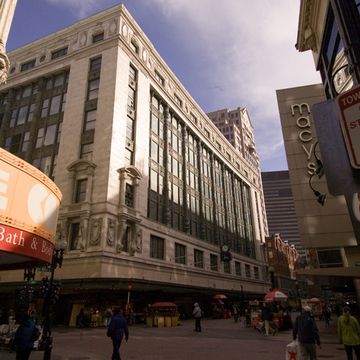Edward Filene chose the Chicago firm of Daniel H. Burnham to design his Boston department store because of their international reputation for this building type. Modeled on their
You are here
Filene's Department Store
1911–1912, D. H. Burnham and Co. 426 Washington St.
If SAH Archipedia has been useful to you, please consider supporting it.
SAH Archipedia tells the story of the United States through its buildings, landscapes, and cities. This freely available resource empowers the public with authoritative knowledge that deepens their understanding and appreciation of the built environment. But the Society of Architectural Historians, which created SAH Archipedia with University of Virginia Press, needs your support to maintain the high-caliber research, writing, photography, cartography, editing, design, and programming that make SAH Archipedia a trusted online resource available to all who value the history of place, heritage tourism, and learning.


